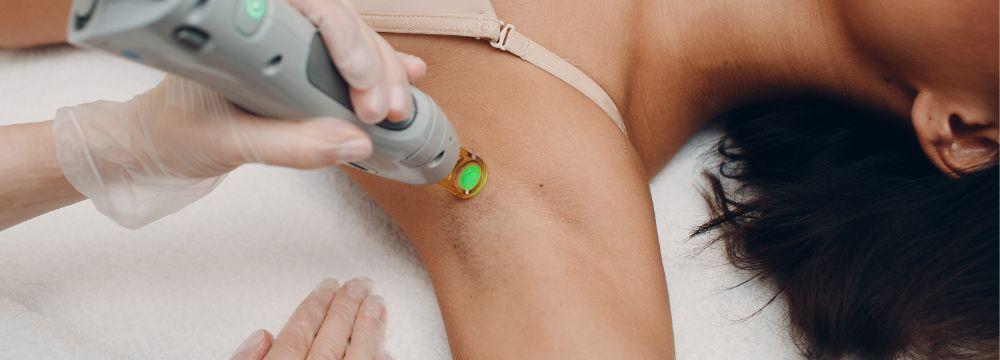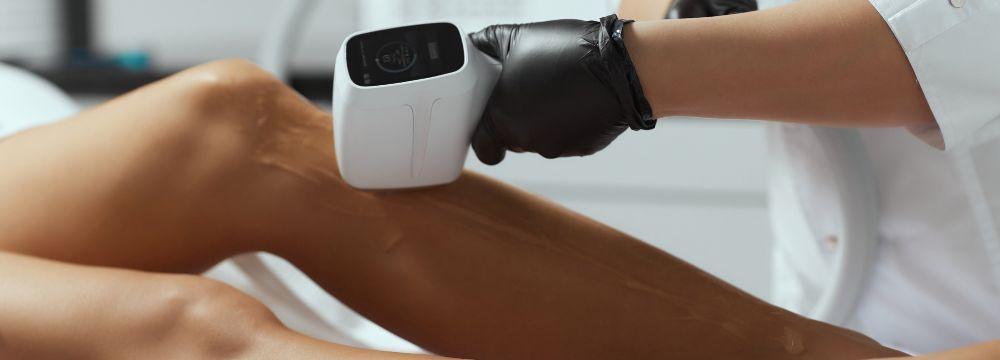Can You Reverse Sun Damage to Your Skin?
As temperatures rise, so do our opportunities to spend more time outdoors. The start of summer is right around the corner, meaning longer days under the sun and in the water. For most of us, we’ve been doing this summer thing all-out for as long as we can remember. Whether sunbathing, tanning, laying out, sun-worshipping — however, you want to phrase it, most of us have spent our fair share of time in the sun without adequate protection. And while we have multiple resources now, including social media, health and wellness blogs, and new research to indicate that extensive time in the sun can be damaging both to the health of our skin as well as to our aesthetics, in years past, this information wasn’t as readily available. This generation might be surprised to know what we used to do on our skin to get a tan (baby oil and iodine, anyone?) and surprised to learn that, just like seatbelts, wearing sunscreen was optional back then. But we know better now.
Sun damage is an overarching term covering all possible damage from overexposure, but there is no one manifestation of “sun damage.” The results of sun damage can range from aesthetic issues like the development of wrinkles, textured skin, patchiness, loss of elasticity, broken blood vessels, and pigmentation changes like freckles, liver spots, and other clusters of hyper-pigmentation.
Perhaps the most severe of all sun damage is that to the skin’s actual health. While the aesthetics are what we first see and often our first indicator of damage, the breakdown and destruction of skin at the cellular level is the most concerning. While UVA rays are known to cause visible aging of the skin, i.e., wrinkles, sunspots, and discoloration, UVB rays destroy skin cell makeup and are considered the cause of most skin cancers. According to skin cancer.org, more people are diagnosed with skin cancer each year in the US than all other cancers combined, and one in five Americans will develop skin cancer by the age of 70.
The first thing to do when determining what to do about sun damage is to assess the health of your skin and rule out any issues, aside from what is visible in the mirror and those unfiltered photos.
Once a year, depending on your prior history, it is critical to visit a dermatologist and get a complete body scan. A dermatologist will carefully look over every inch of your skin surface and the health of your scalp, between your toes, and under your nail beds. Once you get a clean bill of health and it is determined that there are no outward signs of concern, it’s time to tackle aesthetics.
Yes. We have seen every TikTock video and Instagram reel of “holy grail” and “must-have” products to slather on for a 17-year-old’s complexion, but the sad truth is that there are no overnight fixes for years of neglect and damage to our skin. That said, the first step in trying to peel back some years is to make a consultation with a reputable dermatologist and hear out their assessment and plan for your particular situation. Again, knowing there is no quick fix, you want to be comfortable with your provider because they will be your partner in offering a longer-term solution. By getting to know your skin, lifestyle habits, and goals, your doctor can tailor your regimen for optimal results.
Technology changes rapidly, and we are in the prime of the evolution of aesthetic dermatology. A handful of years ago, there were only serums, lotions, and experimental gadgets to combat sun damage, and now we have lasers, injections, resurfacing, and so much more. But because there is so much out there, we can get mired in inconclusive and damaging advice.
Some treatments available to you range from topicals, like chemical and topical peels, to a range of lasers. The benefits can vary from fading uneven pigmentation and shrinking pores to sparking new collagen production. It’s important to note that these procedures often peel away old skin and increase sensitivity. Wearing a strong and quality facial sunscreen is essential during and after treatment.
Let’s take a look at a few of them:
- Exfoliants – Whether chemical or mechanical, topicals stimulate skin cell turnover by removing dead, dry skin and unclogging pores. This not only leads to better texture but enhances freshness and glow.
- Lightening agents – These range from mild to advanced, but they all work to do the same thing — fade hyperpigmentation. They do not completely remove the damage but can lighten freckles, live spots, splotchy patches, and scarring.
- Vitamin C — Retinoids derived from Vitamin A can stimulate collagen production, have skin renew itself, and even lighten brown spots. There are many reviews of popular Vitamin C products online. Discuss them with your doctor to understand their potency and how they interact with other products in your routine.
- Chemical Peels – A dermatologist should always perform these. These non-surgical procedures remove the outermost layer of the skin. The “depth” of the peel depends on your needs, and your dermatologist best handles this.
- Lasers — This is where technology continues to wow us.
- Light-based devices — Known as photo rejuvenation, such as the IPL laser, light-based treatment improves skin texture, spots, and blotchiness and targets broken blood vessels.
- Fractionated non-ablative lasers create “damage” to the skin and then prompt it to heal, revealing fresh, healthier skin.
- Ablative lasers go the deepest and require a longer recovery period. Essentially these Target the deeper lines and wrinkles and serious pigmentation issues.
So, what does this mean for us moving forward? We want to feel the sunshine and live our best lives, but we also want impossibly dewy, glowing skin and the confidence that we are protecting our health. The most solid approach is awareness, caution, and commonsense rules. First, wear a good broad-spectrum sunscreen and reapply after water sports, heavy perspiration, or after 90 minutes. Take breaks in the constant sun, and find some shade for periodic respite. Stay hydrated, wear a hat (we like those wide-brimmed dramatic ones), and clothing that covers the body during the late morning to early evening when the sun is the strongest.
Being mindful and making small changes will jumpstart your skin’s regeneration, find your inner glow, and establish better habits for you and your family for the long term.




